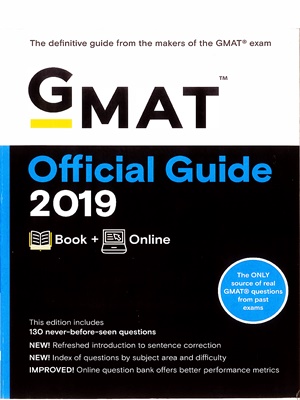Description
GMAT Official Guide 2019. The GMAT exam measures higher-order analytical skills encompassing several types of reasoning. The Analytical Writing Assessment asks you to analyze the reasoning behind an argument and respond in writing; the Integrated Reasoning section asks you to interpret and synthesize information from multiple sources and in different formats to make reasoned conclusions; the Qyantitative section asks you to reason quantitatively using basic arithmetic, algebra, and geometry; and the Verbal section asks you to read and comprehend written material and to reason and evaluate arguments. Test questions may address a variety of subjects, but all of the information you need to answer the questions will be included on the exam, with no outside knowledge of the subject matter necessary. GMAT Official Guide 2019.
The GMAT exam is not a test of business knowledge, English vocabulary, or advanced computational skills. You will need to read and write in English and have basic math and English skills to perform well on the test, but its difficulty comes from analytical and critical thinking abilities. The questions in this book are organized by question type and from easiest to most difficult, but keep in mind that when you take the test, you may see different types of questions in any order within each section. GMAT Official Guide 2019. Though the individual questions are different, the mix of question types is the same for every GMAT exam. Your score is determined by the difficulty and statistical characteristics of the questions you answer as well as the number of questions you answer correctly. By adapting to each test-taker, the GMAT exam is able to accurately and efficiently gauge skill levels over a full range of abilities, from very high to very low. GMAT Official Guide 2019.





